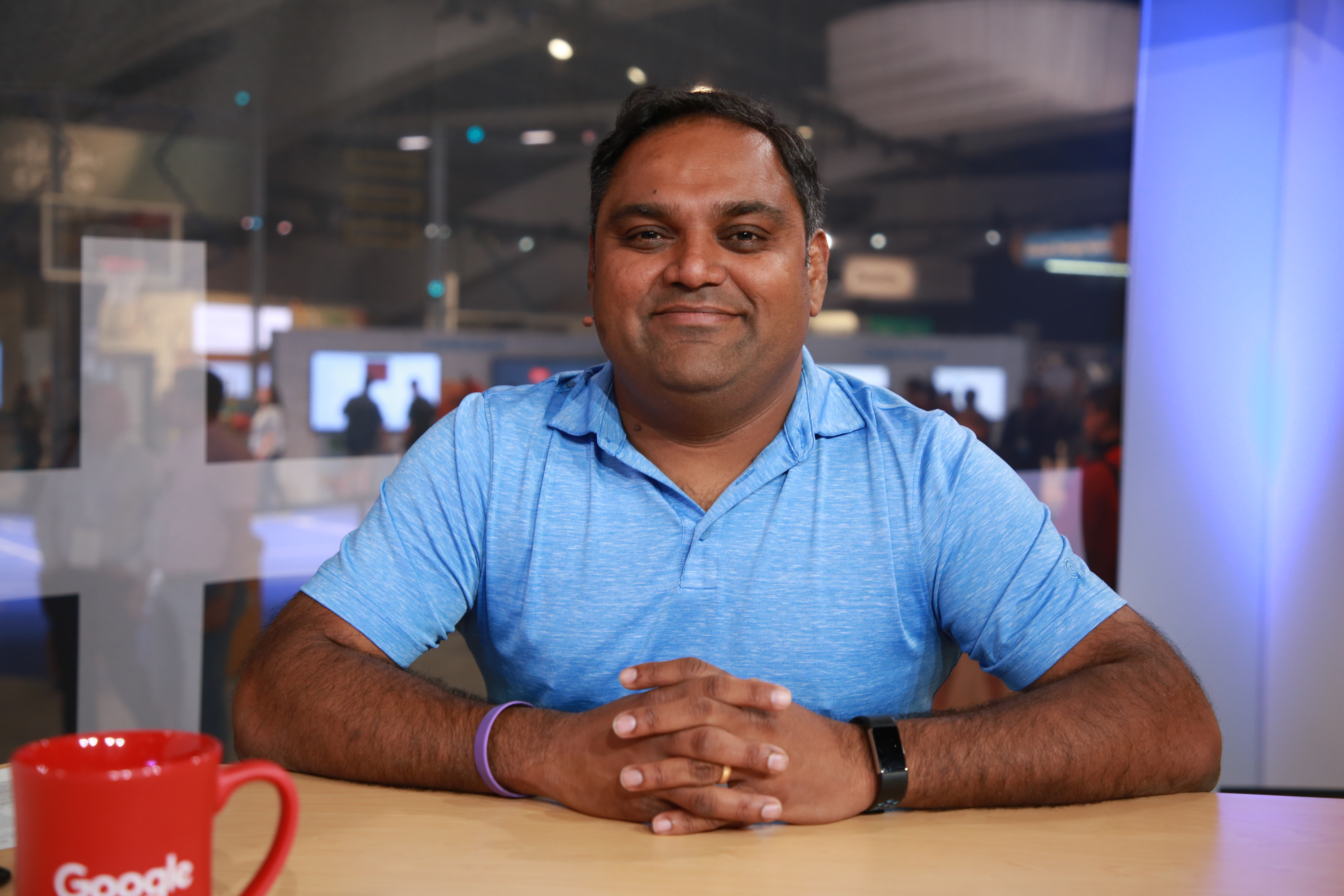 INFRA
INFRA
 INFRA
INFRA
 INFRA
INFRA
Among the many announcements from last week’s Google Cloud Next event was a noteworthy update to Google LLC’s BigQuery, adding machine learning capabilities to the SQL data warehousing tool. The addition, dubbed BigQuery ML, makes it easier for developers to work in the perks of machine learning without having to export data from BigQuery to a separate engine, such as Cloud ML Engine or AutoML.
“Ease of use is a major focus for us. As we’re growing we want to make sure everybody in the organization can get access to their data and analyze it,” said Sudhir Hasbe (pictured), director of product management at Google Cloud. “We also announced clustering that allows you to reduce the cost, improve efficiency, and make queries almost two times faster.”
Hasbe spoke with John Furrier (@furrier) and Jeff Frick (@JeffFrick), co-hosts of theCUBE, SiliconANGLE Media’s mobile livestreaming studio, during the recently concluded Google Cloud Next event in San Francisco. They discussed Google’s integration of its enterprise data warehouse, BigQuery. (* Disclosure below.)
In an effort to compete with service-heavy rivals, such as Amazon Web Services Inc. and Microsoft Azure, Google’s enterprise cloud play is honing its focus on problem-solving specific issues in the world of cloud computing. This is evident in BigQuery’s efforts to address two of the biggest problems in machine learning.
First, moving the data has historically been a complicated undertaking for data scientists, even with the development of early solutions like Hadoop’s open-source software for large-scale data computations. With BigQuery ML, Google has moved machine learning closer to the data, rather than moving the data closer to machine learning, according to Hasbe.
“That’s what BigQuery ML is; it’s an ability to run regression-like models inside the data warehouse itself, inside BigQuery,” he said.
Secondly, Google addressed the problem of skillset gaps. Customers of BigQuery are all assumed to know SQL and the business analytics, so all that they need to then do is “create the type of model you want to run; give us the data, and we’ll run the machine learning model on the backend and you can do predictions pretty easily,” Hasbe explained.
Google itself has been using a program extremely similar to BigQuery called Dremel, since before 2012, for all large-scale data analytics, according to Hasbe. “This is a way of taking a piece of technology that’s powered Google for a while and also make it available to enterprises,” he added.
The lessons learned internally could prove a competitive advantage for Google as it looks to gain market share in enterprise cloud, especially if the search engine leader can translate this experience into service-oriented client solutions.
As one of Google’s more notable accomplishments in machine learning, BigQuery has already gained interest from online music giant Spotify Technology SA for its analytics capabilities.
Watch the complete video interview below, and be sure to check out more of SiliconANGLE’s and theCUBE’s coverage of the Google Cloud Next event. (* Disclosure: Google Cloud sponsored this segment of theCUBE. Neither Google nor other sponsors have editorial control over content on theCUBE or SiliconANGLE.)
Support our mission to keep content open and free by engaging with theCUBE community. Join theCUBE’s Alumni Trust Network, where technology leaders connect, share intelligence and create opportunities.
Founded by tech visionaries John Furrier and Dave Vellante, SiliconANGLE Media has built a dynamic ecosystem of industry-leading digital media brands that reach 15+ million elite tech professionals. Our new proprietary theCUBE AI Video Cloud is breaking ground in audience interaction, leveraging theCUBEai.com neural network to help technology companies make data-driven decisions and stay at the forefront of industry conversations.